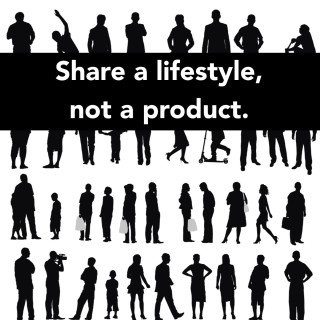And now for the second installment of our two-part series on The Great 8 of Marketing Success. Numbers 5-7 are distinctly digital in nature and deal with how you can communicate and meet your customers where they are. Our last recommendation caps off our series with a decidedly human touch.

Number 5: Website
Prospects – both clients and candidates – are going to your website to validate your company and expertise. Make sure you are communicating your point of differentiation and your brand personality.
Most service sites look the same, sound the same and make the same mistakes. Take a look at your website and see if you can take it to the next level:
- Eliminate the word “we.” Replace it with “you”, “your”, “our clients”, or “our candidates.” It seems like a small distinction, but you might be surprised by how much more customer-centric your copy will sound once you replace one word.
- Include links to your social networks. And if you already have links to your social networks – great! Are they up-to-date? Or do you still have a link to your Google+ account? ( Hint: you might want to delete that one.)
- Sell results and testimonials. Third party endorsements go a long way and potential customers want to see the value you can bring to their company.
- Use minimal stock photos. We get it – when you were getting your website off the ground, you used whatever you had on hand to get it done. But stock photos can reduce the credibility of your company and take from the authenticity of your brand. Make the investment and book a professional photographer.
- Optimize the site for mobile. No one likes to pinch and zoom on their phone when they are trying to view a website. And increasingly, Americans of all ages are likely to say that they mostly access the internet on their smartphone.
- Make it easy for people to contact you with a form and make sure your phone number and email address are front and center.
Number 6: Social Media
Consumers are increasingly using social media to not only connect with friends and family, but also with brands. Social media is increasingly influencing consumers’ buying behavior:
- When consumers follow a brand on social media, 67% of consumers are more likely to spend more with that brand.
- Social media can drive retail foot traffic: 78% say they will visit that brand’s physical retail store.
- These results become even more pronounced when you narrow in on millennials: 84% said they were more likely to buy from a brand they follow on social media.
But, don’t count out older folks – young people may have been early adopters of social media, but older adults using social media has increased as well.
It’s easy to be overwhelmed by social media. That’s why we recommend narrowing your focus and pick two social networks to be active on daily. Most social networks are monetizing their platforms so organic social media, i.e. free, is becoming less effective, which is why you must be active consistently.
But which platforms should you choose? It depends. We recommend meeting your customers where they are. With almost a third of the world’s population using Facebook, the 500-lb. gorilla in the room might be a given. If you have an aspirational brand whose customers skew female and under the age of 49, Pinterest or Instagram may be a good fit. If you are more of a B2B company, look at joining YouTube, LinkedIn or Twitter.
Also, make sure you are connecting with the people you meet, whether you are introduced virtually or in person. Utilize both your personal timeline and create a company account if you don’t already have one.
Number 6.5: Social Media Content
As for content, have you ever been to a party and you were cornered by that one guy who talks about himself all night? Don’t be that guy.
Instead follow the rule of thirds: 1/3 of your content should be devoted to sharing content, 1/3 to engaging with others and 1/3 promoting yourself. Share open positions at your company, business successes and company news, just don’t let all your content be about you.
Number 7: Email Marketing
Email marketing doesn’t have to be crazy complicated or expensive. Email marketing is inexpensive and effective. If done correctly, you will be surprised at the results you see after every send.
Use a simple automated platform like MailChimp and send an email to your audiences once a month, or if you are just starting out, once every other month. Make sure you are updating your databases and are not sending the same content to both your clients and candidates.
Target your content to the reader and use your email marketing to establish yourself as a thought leader. Share information and expertise. This is especially true for B2B businesses; email marketing is most effective if you are sharing news people can use. At Front Porch, this is the direction we choose to take with our email newsletter. We offer marketing advice and highlight our clients.
Similarly to social media, do not use email marketing to talk 100% about your company or you. It will not work.
Number 8: Networking
We are very fortunate to have several places to network in North Texas – industry associations, chambers of commerce, community organizations and the list goes on.
In deciding which group is right for you, consider these things:
- Can I learn and grow?
- Are this group’s values aligned with mine?
- Can I contribute my knowledge and skills?
- Do we have common interests?
When you are at these meetings or events, remember:
- Give to get. Focus on what you can do for others, not what they can do for you.
- Make sure you have business cards. (I know that sounds obvious, but you’d be surprised.)
- Ask questions and listen.
- Follow up. Sometimes this is the hardest thing to do because we are all wearing so many hats, but it is important to connect on LinkedIn with people you met, send them an email and if the situation calls for it, send a handwritten thank you note.
As business owners, we need to network. We need to work “on” our business as much as possible, not in our business.
Networking is a process. Remember that most business owners are looking for connections. Make time to network intentionally. Be bold and step forward into their world.

I urge you to not “go big or go home,” but as we tell our small to mid-sized clients, “Fewer. Deeper.” Do a couple of things well and knock it out of the park.
If you do your marketing well, then your target audience will come to trust your brand. Trusted relationships develop into emotional bonds that are hard to break. Consequently, loyalty to your brand means greater business success and reduced competitive threat.
Remember The Great 8. Engage your clients and candidates and turn them into customers and brand ambassadors.






